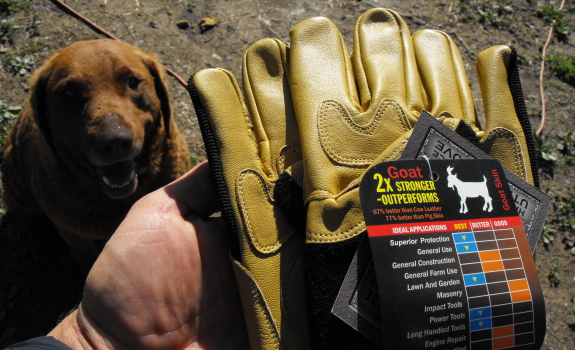
Goat gloves

These new goat gloves claim
to be 67 percent better than cow leather, which will be worth the
additional 50 percent to the price if they actually last that much
longer.
The design and construction
indicate an improvement, but time will tell if a goat really is
tougher than a cow.
Want more in-depth information? Browse through our books.
Or explore more posts by date or by subject.
About us: Anna Hess and Mark Hamilton spent over a decade living self-sufficiently in the mountains of Virginia before moving north to start over from scratch in the foothills of Ohio. They've experimented with permaculture, no-till gardening, trailersteading, home-based microbusinesses and much more, writing about their adventures in both blogs and books.
Want to be notified when new comments are posted on this page? Click on the RSS button after you add a comment to subscribe to the comment feed, or simply check the box beside "email replies to me" while writing your comment.

I've used kevlar extensively in composites. It's tough as nails. I did tests on kelvar laminates that shattered or even powdered the resin, and the fibers wouldn't break. It's also very abrasion resistant. When woven or knitted properly, it is very supply. Cutting it is very difficult.
You can also get kevlar gloves coated with different kinds of rubber on the palm side for extra grip. The rubber coating can be continuous or in dots.
Kevlar will not melt. At temperatures exceeding 800 °F it will start to decompose instead. It does age under UV light. But storing it inside will negate that to a large extent.